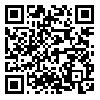Volume 1, Issue 2 (2003)
LIRE 2003, 1(2): 7-36 |
Back to browse issues page
Download citation:
BibTeX | RIS | EndNote | Medlars | ProCite | Reference Manager | RefWorks
Send citation to:



BibTeX | RIS | EndNote | Medlars | ProCite | Reference Manager | RefWorks
Send citation to:
The symbols of Afrasyab Mythical nature in Shahnameh
(Sajjad-e-Aydenloo. LIRE 2003; 1 (2) :7-36
URL: http://lire.modares.ac.ir/article-41-11215-en.html
URL: http://lire.modares.ac.ir/article-41-11215-en.html
Abstract: (7535 Views)
King Afrasyab is the Torani famous athlete and the enemy of Iranian people in Shahnameh on which the talks have been presented concerning nearby the city of the friends and athletes in Iranian mythical-epic recourses. Following the 20th century A.D., some of the experts on Iranian Cultures and civilization and along them, some of the Iranian myth researchers have put forward the theory that Afrasyab is the symbol for Apoush, the devil of drought, and also the equivalent and symbol for dragon and, recognized his first and mythical nature as a non-human creature and fiend. Although the devil or dragon or devil-like nature of Afrasyab is not explicitly expressed in any existing recourses, more probes into Shahnameh will reveal some more signs ; like calling him as ill-generated in Shahnameh, creating famine and removing the rain and water and aggression to Iran, the ability to live in land and in the depth of water (amphibian), his life in the basement, relation with black color, Afrasyab charming, the irrelativeness nature of his close relatives, similarity and ties with devil and fiends, verifying this theory.
It is documented in this study, through explaining the sings mentioned and presenting the required example from Shahnameh and other recourses, that Afrasyab in the ancient myths and very ancient patterns, is a very fearful and satanic devil, dragon converted to the Shah’s committee- the Torani athlete and Then Turk athlete and historical existance but, some other testimonies from the mythical and first nature are left by him in Shahnameh and some other resources.
It is documented in this study, through explaining the sings mentioned and presenting the required example from Shahnameh and other recourses, that Afrasyab in the ancient myths and very ancient patterns, is a very fearful and satanic devil, dragon converted to the Shah’s committee- the Torani athlete and Then Turk athlete and historical existance but, some other testimonies from the mythical and first nature are left by him in Shahnameh and some other resources.
Article Type: Original Research |
Subject:
Myth
Received: 2003/12/6 | Accepted: 2003/12/22 | Published: 2003/12/23
Received: 2003/12/6 | Accepted: 2003/12/22 | Published: 2003/12/23
| Rights and permissions | |
 |
This work is licensed under a Creative Commons Attribution-NonCommercial 4.0 International License. |







